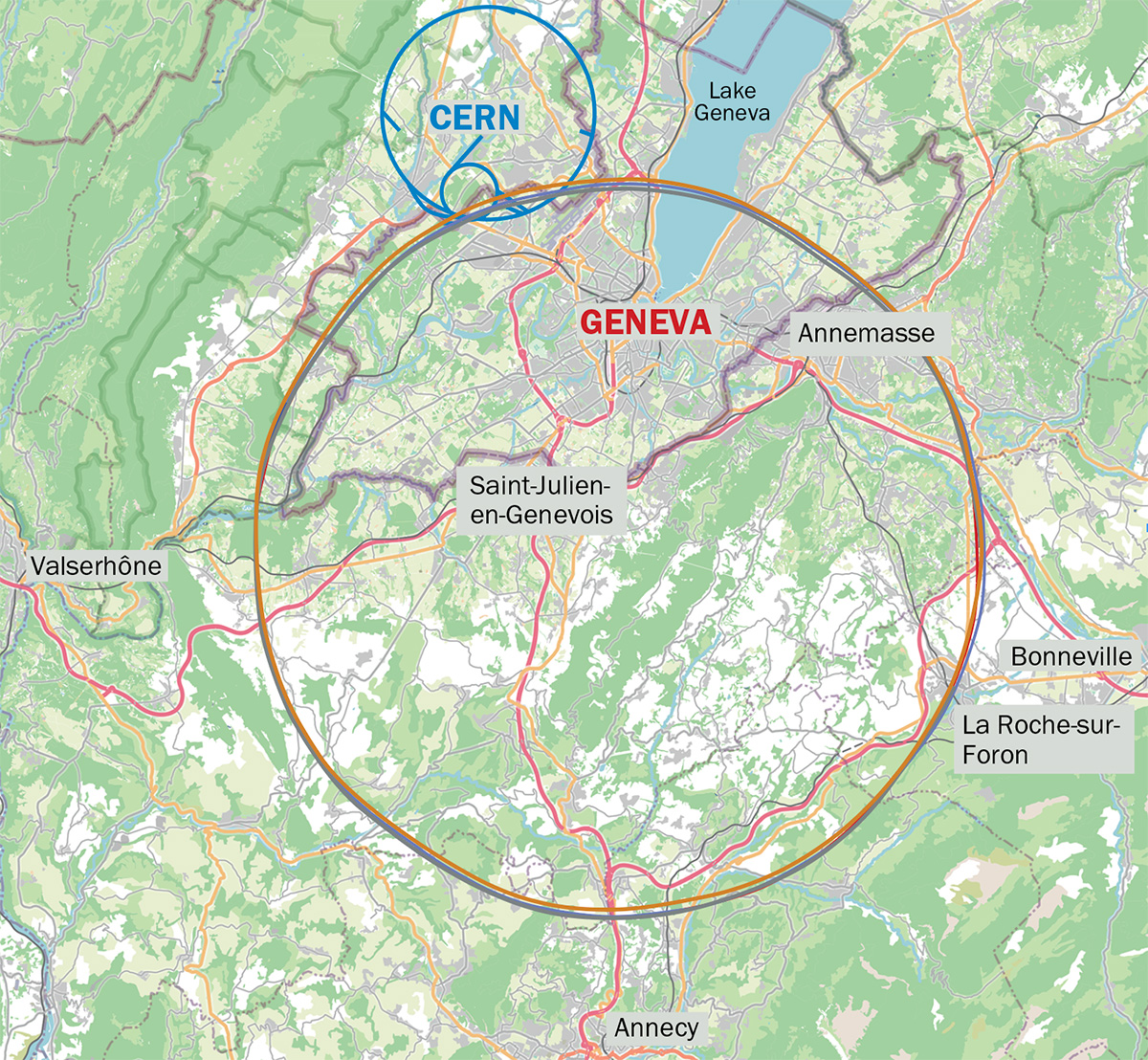Host states gear up to work on FCC
The strong support and cooperation of administration services in France and Switzerland are reassuring for the next steps of the Future Circular Collider feasibility study, describes Johannes Gutleber.

In preparing the long-term future of high-energy physics after the LHC, the 2020 update of the European strategy for particle physics recommended that Europe, together with its international partners, explore the technical and financial feasibility of a future proton–proton collider at CERN with a centre-of-mass energy of at least 100 TeV, and with an electron–positron Higgs and electroweak factory as a possible first stage. In 2021 a new chapter opened for the Future Circular Collider (FCC) feasibility study with the development of the preferred layout and placement scenario for this visionary possible new research infrastructure.
